
Roots
Beneath the intricate coils and delicate waves, a hidden world thrives upon the scalp, a bustling microscopic landscape shaping the very vitality of our strands. For generations, the visible beauty of hair has captured our attention, yet the invisible life beneath has quietly held sway, dictating much of what we perceive as healthy or challenged hair. To truly comprehend the dance of hair wellness, we must first become acquainted with this unseen ecosystem, a vibrant community of microorganisms that calls our scalp home.

The Unseen Garden on Our Scalp
The human scalp, far from being a sterile surface, hosts a complex and dynamic microbial community, a living garden of bacteria, fungi, and even viruses. This community, collectively known as the scalp microbiome, plays a significant part in maintaining the skin barrier, modulating immune responses, and even producing compounds that affect hair growth and texture. Each individual’s scalp microbiome is as unique as a fingerprint, influenced by a myriad of factors from genetics and diet to environment and personal care rituals.
Understanding the balance within this microbial garden is paramount. When this delicate equilibrium is disrupted, often termed dysbiosis, the consequences can ripple outward, manifesting as dryness, irritation, flaking, or even impacting hair retention. A thriving scalp environment, therefore, lays the groundwork for hair that radiates health from its very origin.
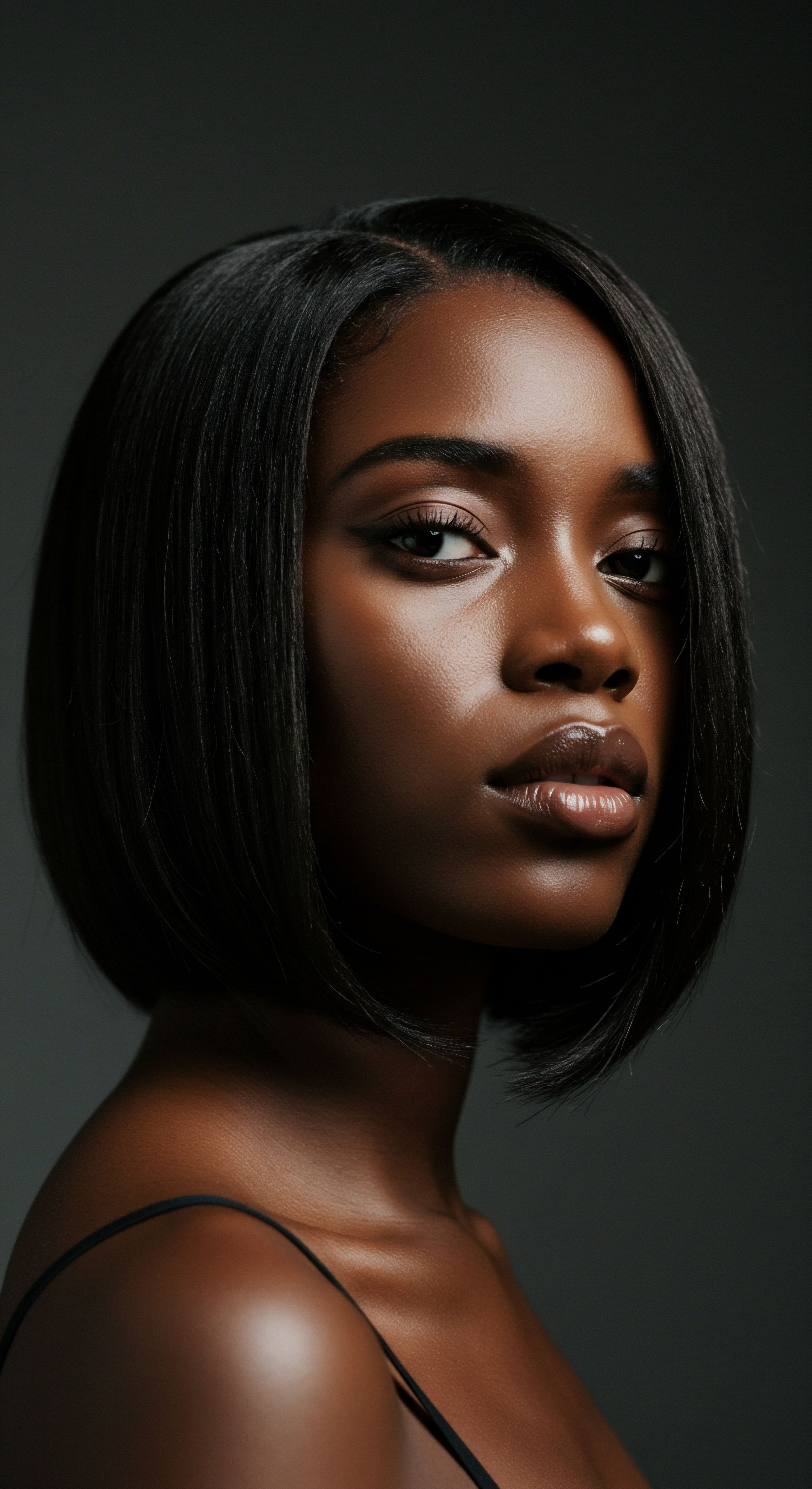
What Does a Balanced Scalp Microbiome Entail?
A healthy scalp microbiome is not merely the absence of harmful microbes, but a harmonious coexistence of diverse species. It’s about maintaining a specific ratio and interaction between various bacterial and fungal residents. For instance, the fungal genus Malassezia, often associated with dandruff, is a natural inhabitant of the scalp. However, an overgrowth of certain Malassezia species can trigger inflammatory responses, leading to flaking and discomfort.
Similarly, bacterial populations, such as those from the Propionibacterium and Staphylococcus genera, contribute to the overall ecosystem. Their relative abundance and metabolic activities can influence sebum production and the pH of the scalp, both critical elements for hair vitality.
A thriving scalp microbiome is a diverse ecosystem where microbial species coexist in harmony, laying the foundation for robust hair health.
Research continues to illuminate the specific roles of these microscopic inhabitants. A study published in the Journal of Cosmetic Science revealed notable differences in scalp microbiome composition across various ethnic groups. This research indicated a higher prevalence of certain bacterial genera, such as Propionibacterium, among individuals with East Asian hair, while those with African hair exhibited a greater diversity of Malassezia species.
This suggests that distinct microbial environments may characterize different hair types, influencing their health and susceptibility to certain conditions. This fascinating observation underscores the idea that universal scalp care approaches might not always be optimal, calling for more tailored understandings that respect the unique biological landscapes of diverse hair textures.

Hair Anatomy and Physiology Specific to Textured Hair
The very structure of textured hair, from its elliptical cross-section to its varied curl patterns, creates a unique landscape for the scalp microbiome. The twists and turns of coily and curly strands mean that sebum, the scalp’s natural oil, does not travel down the hair shaft as readily as it does on straight hair. This can lead to a drier hair shaft and a scalp that might retain more moisture or accumulate product, potentially altering the microbial environment.
The follicular unit, the structure from which hair grows, also interacts with the surrounding microbiome. The hair follicle itself harbors its own distinct microbial communities, and these internal populations can communicate with the surface microbiome, influencing inflammatory pathways and overall follicular health. Understanding these intricate anatomical and physiological considerations is crucial for developing care practices that truly support textured hair from its roots.
- Follicular Unit ❉ The microscopic structure from which each hair strand originates, deeply interacting with the scalp’s microbial life.
- Sebum Distribution ❉ The natural oils produced by the scalp, which due to the helical nature of textured hair, distribute less uniformly along the hair shaft.
- Hair Shaft Curvature ❉ The distinct elliptical shape and varied curl patterns of textured hair, influencing how products and environmental elements interact with the scalp.

The Essential Lexicon of Textured Hair and Microbiome Health
To truly appreciate the connection between the scalp microbiome and textured hair, a precise language becomes indispensable. Terms that might seem common in broader hair discourse gain deeper meaning when viewed through the lens of microbial balance. Consider the concept of Porosity, which describes the hair’s ability to absorb and retain moisture. While primarily a hair shaft characteristic, the condition of the scalp—influenced by its microbiome—can indirectly impact how effectively moisture is supplied to the emerging strand.
Similarly, discussions around Product Buildup often focus on visible residue, yet beneath the surface, this accumulation can create an anaerobic environment, favoring the growth of certain bacteria and fungi, thus shifting the delicate balance of the scalp microbiome. A clear vocabulary allows us to articulate these subtle yet profound connections, moving beyond superficial observations to a more grounded understanding of hair health.
| Term Dysbiosis |
| Relevance to Scalp Microbiome An imbalance in the microbial community on the scalp. |
| Impact on Textured Hair Can cause irritation, flaking, dryness, and potentially impact hair retention. |
| Term Sebum |
| Relevance to Scalp Microbiome The scalp's natural oil, a primary food source for many microbes. |
| Impact on Textured Hair Uneven distribution in textured hair can lead to dry lengths and oily scalp, affecting microbial balance. |
| Term pH Balance |
| Relevance to Scalp Microbiome The acidity or alkalinity of the scalp environment. |
| Impact on Textured Hair Influences microbial growth and can be altered by product use, affecting scalp health. |

Ritual
The daily and periodic gestures we extend to our hair are far more than mere acts of beautification; they are intimate conversations with our strands, and, by extension, with the unseen microbial communities residing on our scalp. Stepping into the realm of practical wisdom, we recognize that every cleanse, every conditioning treatment, every styling choice carries a subtle yet significant influence on this microscopic ecosystem. It is here, in the intentionality of our care practices, that the ancient wisdom of traditional approaches often converges with contemporary scientific understanding, offering pathways to hair health that honor both heritage and innovation.
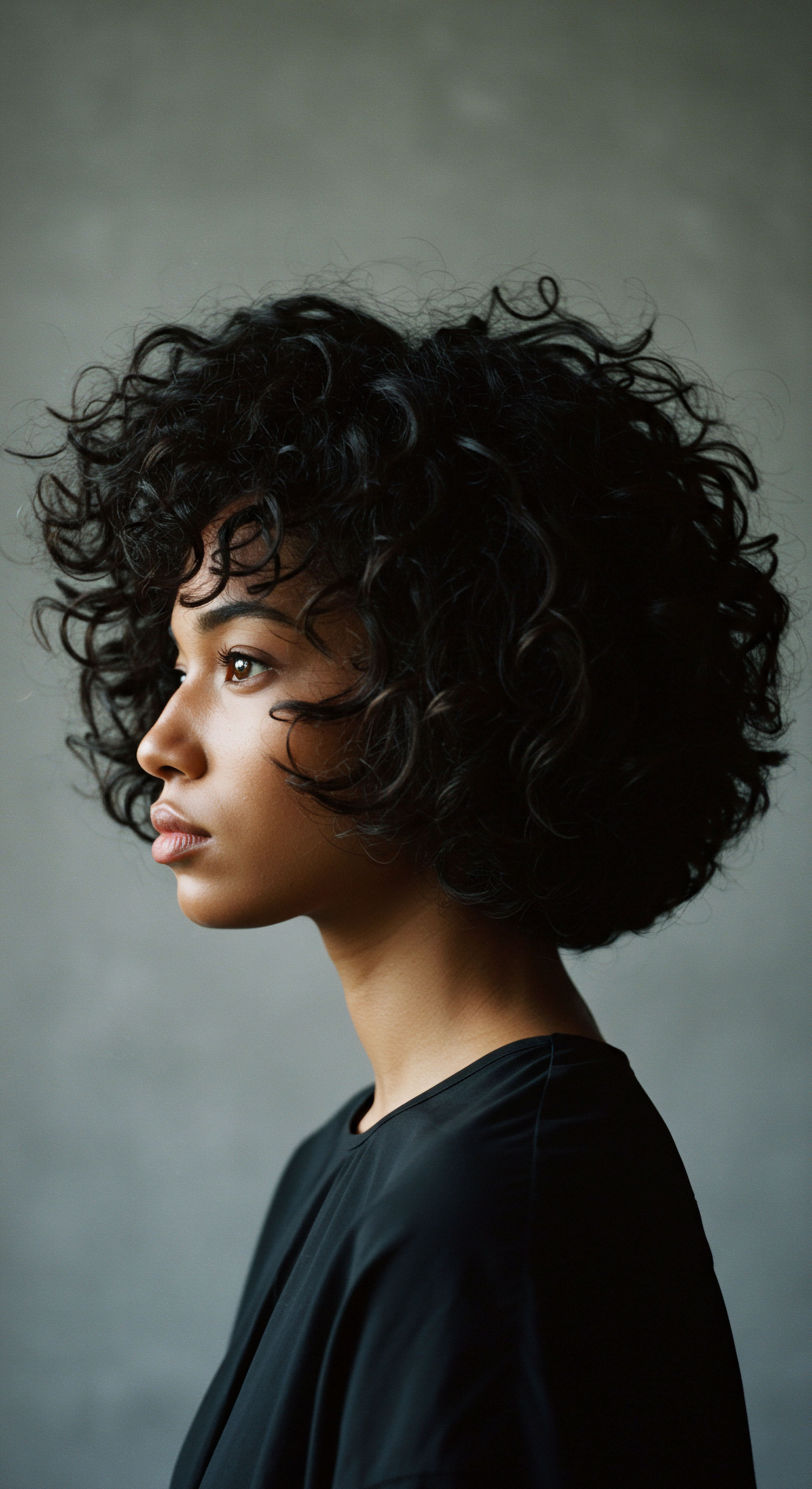
Cleansing and the Microbiome
The very act of cleansing, while seemingly straightforward, holds profound implications for the scalp microbiome. Traditional hair care practices across cultures often emphasize gentle, infrequent washing, sometimes utilizing natural clays, herbs, or fermented rinses. These methods, perhaps unknowingly, often respected the scalp’s natural barrier and its resident microbial populations. In contrast, modern hair care, sometimes driven by notions of excessive cleanliness, can inadvertently strip the scalp of its protective oils and beneficial microbes, leading to an environment ripe for dysbiosis.
When considering textured hair, the need for mindful cleansing becomes even more pronounced. The natural dryness often associated with coily and curly strands means that harsh detergents can exacerbate moisture loss, leading to a compromised scalp barrier. A compromised barrier, in turn, can make the scalp more susceptible to imbalances in its microbial flora, potentially leading to irritation, itchiness, and a less-than-ideal environment for hair growth.
Mindful cleansing, whether ancient or modern, respects the scalp’s natural microbial balance, fostering a healthy environment for textured hair.
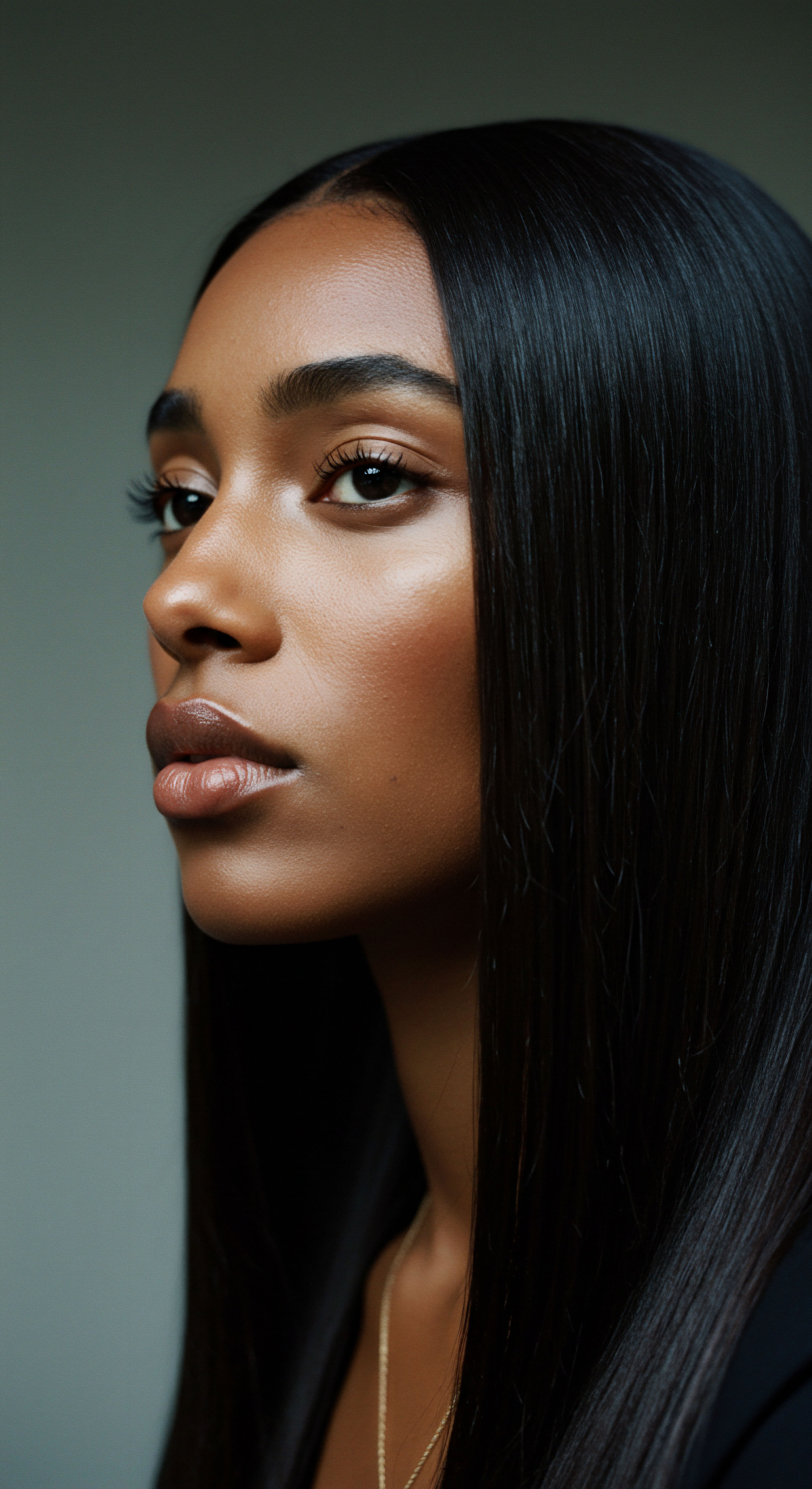
How Does Cleansing Frequency Impact Scalp Microbes?
The frequency of washing is a delicate balancing act. Over-cleansing can disrupt the natural oil production and strip away beneficial bacteria, potentially leading to dryness or an overproduction of sebum as the scalp tries to compensate. Under-cleansing, conversely, can lead to the accumulation of sebum, dead skin cells, and product residue, creating a breeding ground for certain microbial species, such as Malassezia, which can contribute to dandruff and other scalp conditions. Finding the optimal washing schedule for individual textured hair types is a journey of observation and adjustment, aiming to support the scalp’s natural rhythms rather than override them.
Many traditional practices, such as those found in various African and diasporic communities, historically favored less frequent washing, often relying on co-washing or rinsing with water and natural infusions between full washes. This approach intuitively supported the preservation of natural oils and the scalp’s microbial ecosystem, preventing the stripping that harsher cleansers can cause. The focus was on nourishing and maintaining the hair’s inherent moisture, which indirectly benefited the scalp’s delicate balance.

Conditioning and Scalp Nourishment
Conditioning is not solely about softening the hair shaft; it also extends to nourishing the scalp, particularly when formulations are applied with intention. Many traditional conditioning methods involved the application of natural oils, butters, and plant extracts directly to the scalp, providing emollient properties and, in some cases, antimicrobial benefits. These practices, passed down through generations, often used ingredients like Shea Butter, Coconut Oil, or herbal infusions that possessed properties that could soothe the scalp and maintain its barrier function, thereby indirectly supporting a balanced microbiome.
Modern science now offers a deeper appreciation for how these emollients and botanical extracts can influence the scalp environment. Certain fatty acids present in natural oils can have anti-inflammatory effects, calming irritation that might otherwise disrupt microbial harmony. Furthermore, the act of gentle massage during application enhances blood circulation, a practice long recognized in traditional systems for its benefits to hair vitality.
- Pre-Poo Treatments ❉ Applying oils or conditioners before shampooing, a traditional practice that shields the hair and scalp from harsh detergents, preserving moisture and microbial balance.
- Scalp Massages ❉ Incorporating the deliberate manipulation of the scalp during conditioning, stimulating blood flow and potentially aiding in the distribution of beneficial microbes.
- Leave-In Conditioners ❉ Utilizing formulations that remain on the hair and scalp, providing continuous hydration and a protective layer, influencing the micro-environment.
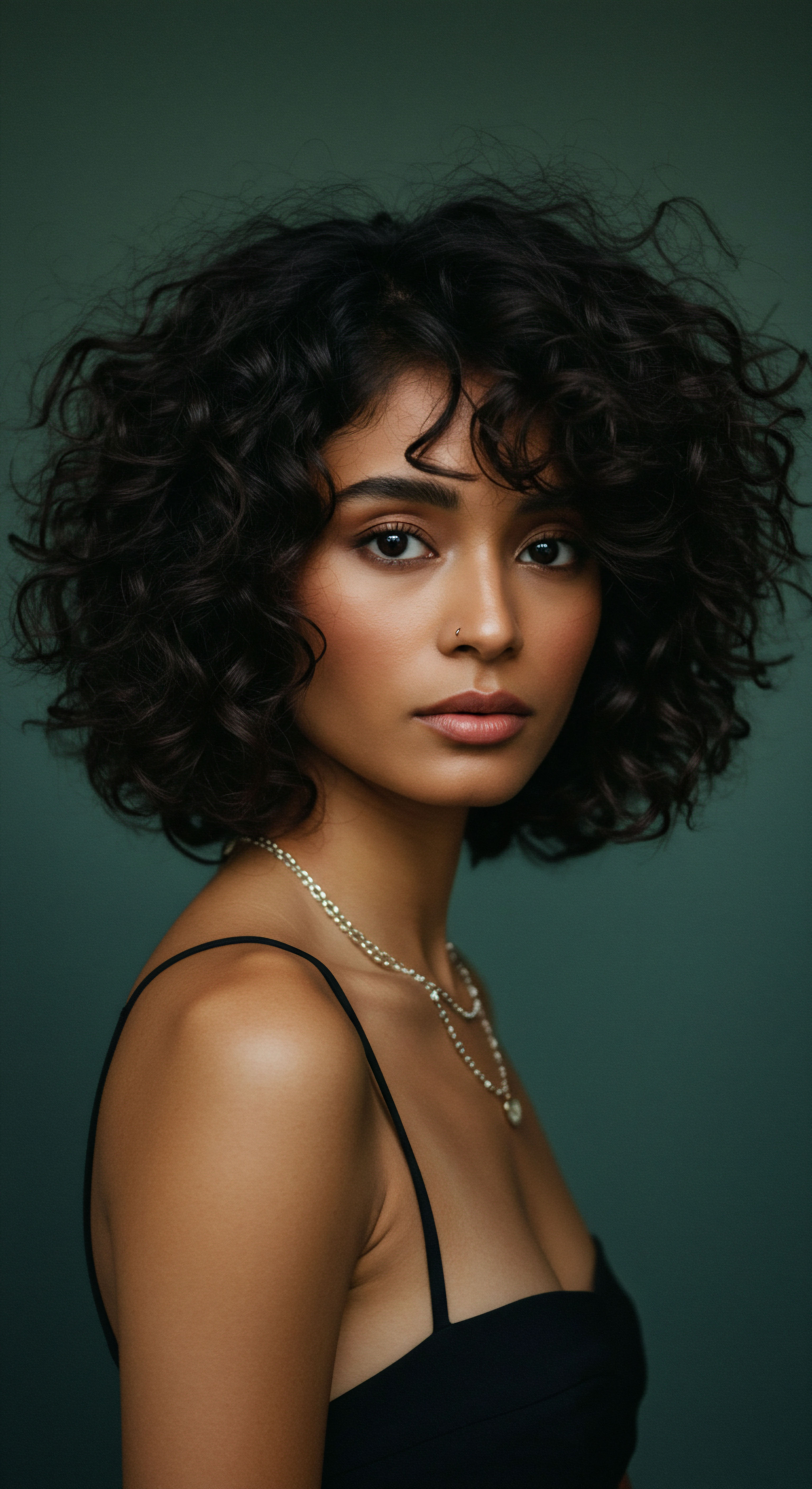
Styling and Product Choices
The choice of styling products and methods significantly impacts the scalp microbiome. Heavy, occlusive products, when used excessively or without proper cleansing, can create an environment that favors the growth of anaerobic bacteria or specific fungal species. This can lead to issues such as clogged pores, folliculitis, or exacerbate conditions like dandruff. Similarly, tight styling practices, while protective for the hair shaft, can place stress on the scalp, potentially impeding circulation and altering the local microclimate, which in turn can influence microbial populations.
Traditional styling often relied on natural fixatives and light oils, which generally allowed the scalp to breathe. Practices like intricate braiding or wrapping, while sometimes taut, were often accompanied by regular scalp oiling or herbal rinses that aimed to keep the scalp healthy beneath the style. The historical context of these methods often involved an intuitive understanding of scalp breathability and the need for periodic refreshment.
Conversely, the advent of synthetic ingredients and heavier styling agents requires a more conscious approach to scalp health. The use of certain silicones or petroleum-based products, while providing shine or hold, can form a film on the scalp that might trap moisture and microbes, leading to imbalances if not regularly and thoroughly cleansed. This highlights the need for a thoughtful selection of products that support, rather than hinder, the scalp’s natural ecosystem.
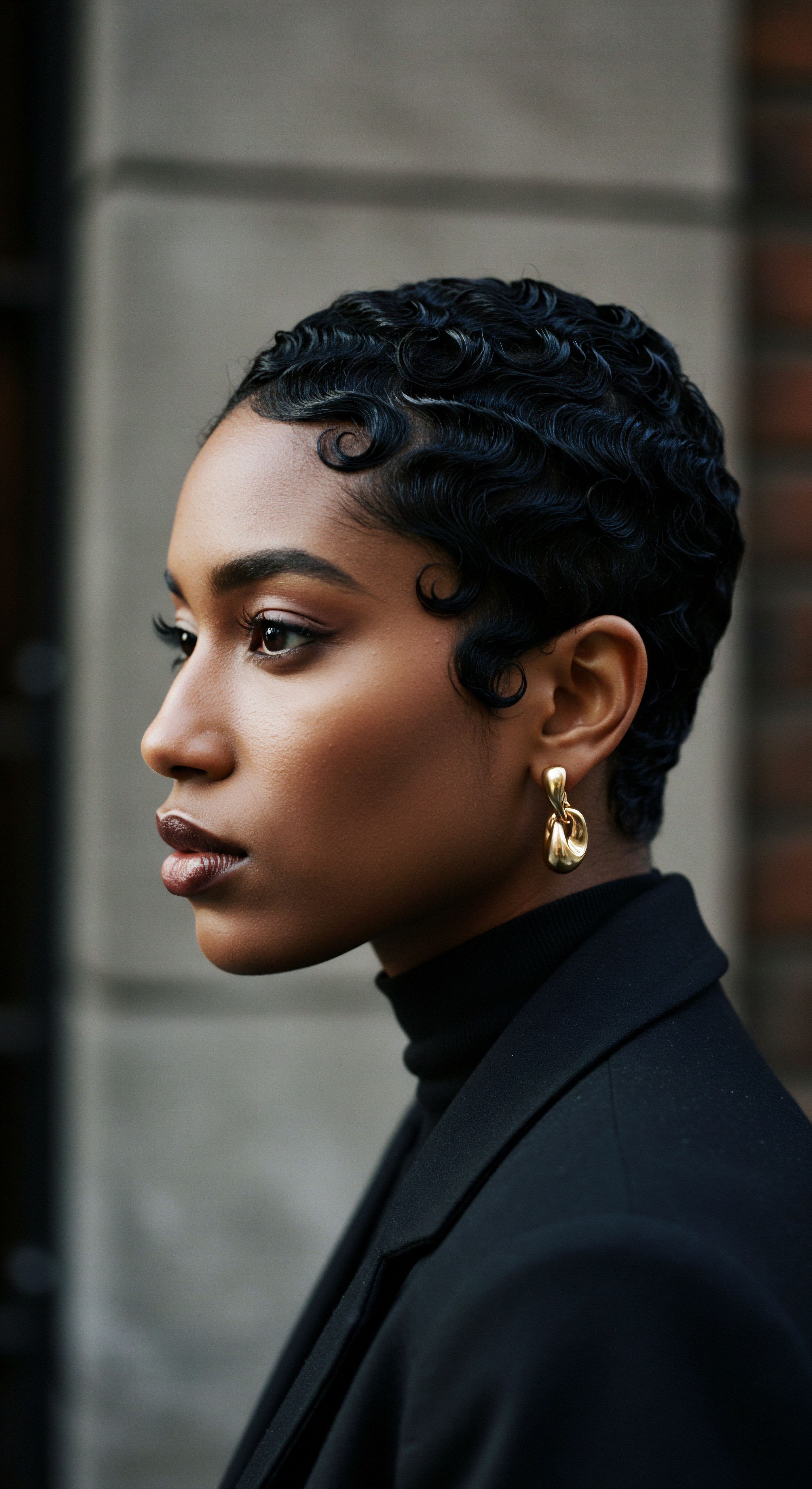
Relay
Beyond the visible strands and daily routines, a profound interplay exists between the microscopic inhabitants of our scalp, the wisdom passed down through generations, and the broader context of our wellness. To truly understand how the scalp microbiome shapes hair health and its intricate ties to traditional care, we must consider the converging paths of cutting-edge science and ancestral knowledge. This is where the subtle nuances of culture, biology, and environment begin to reveal a more complete picture, moving beyond superficial explanations to a deep, interconnected understanding.
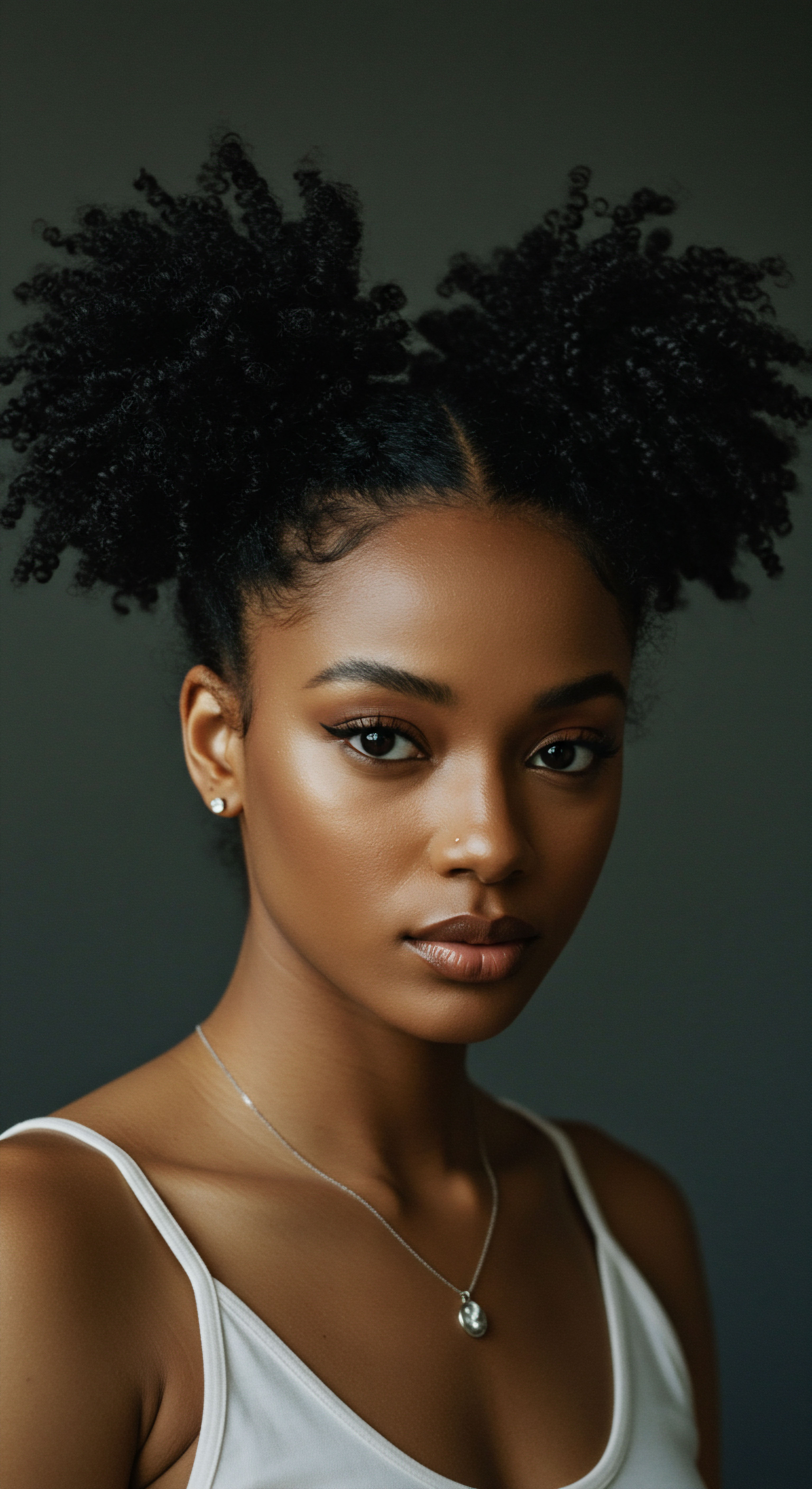
The Microbiome as a Regulator of Scalp Immunity
The scalp microbiome is not merely a collection of organisms; it functions as a critical regulator of the scalp’s immune system. A balanced microbiome helps to train and modulate the local immune responses, preventing overreactions to harmless stimuli and defending against pathogens. When dysbiosis occurs, the immune system can become hyper-responsive, leading to inflammation, itching, and conditions like seborrheic dermatitis, which in turn can negatively impact hair follicle health and growth cycles. This intricate dance between host immunity and microbial residents underscores the scalp as a complex immunological battleground, where microbial harmony is paramount for cellular tranquility.
Consider the research on the inflammatory pathways activated by an overgrowth of Malassezia species. While these fungi are normal inhabitants, their proliferation, often fueled by excess sebum, can trigger an immune cascade involving cytokines and other inflammatory mediators. This localized inflammation can damage the hair follicle, potentially leading to increased shedding or impaired hair growth. The scalp’s ability to maintain a healthy microbial balance is therefore directly linked to its capacity to manage inflammation, a key factor in long-term hair retention and vitality.
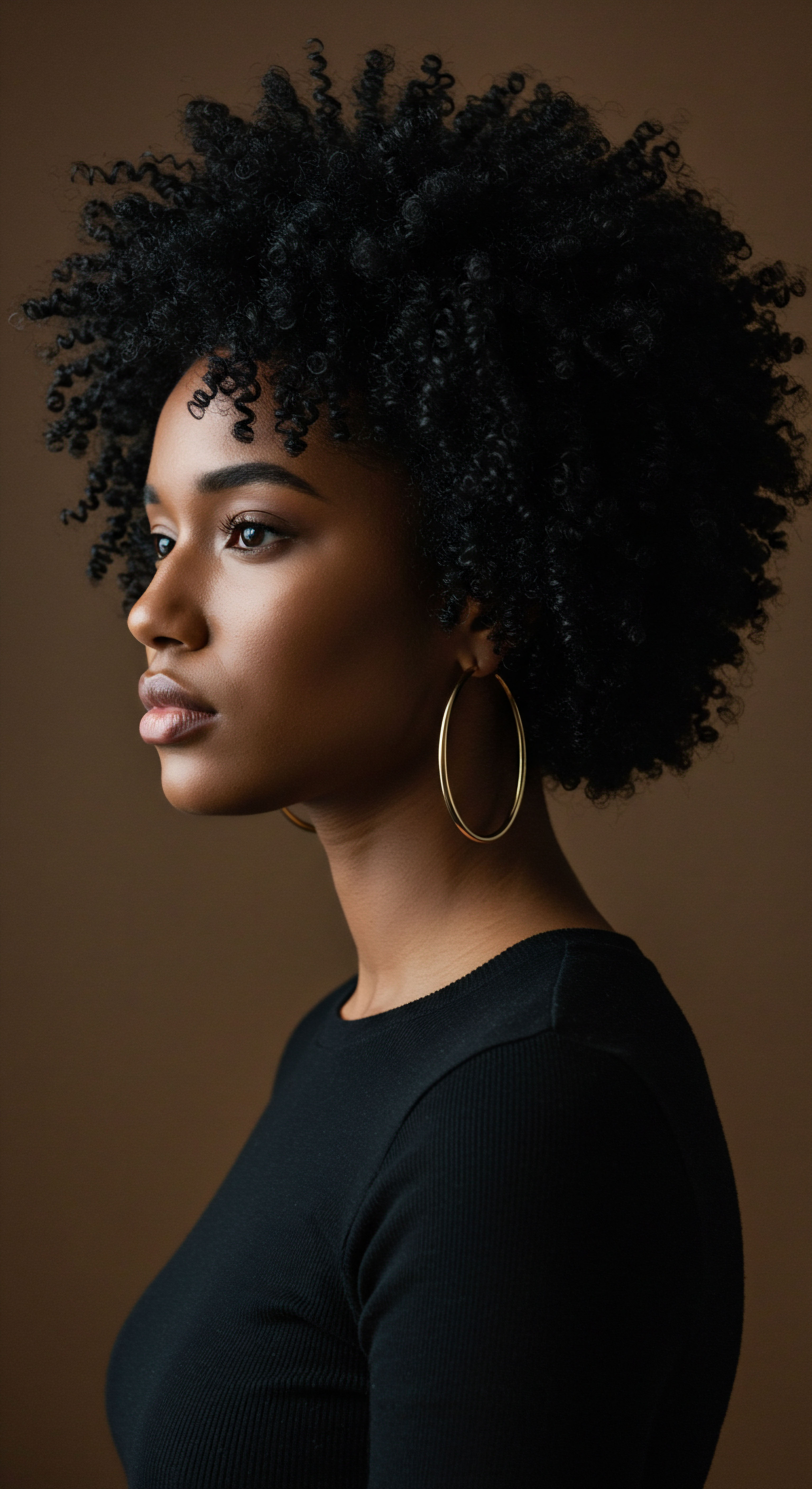
Does Diet Influence the Scalp Microbiome?
The connection between diet and the scalp microbiome, while less directly studied than the gut microbiome, is an emerging area of scientific inquiry. The nutrients we consume, or lack thereof, directly influence the composition of sebum and the overall health of the skin barrier, both of which serve as substrates and environments for scalp microbes. A diet rich in anti-inflammatory foods, antioxidants, and essential fatty acids can support a robust skin barrier and a balanced immune system, creating conditions less favorable for microbial overgrowth or dysbiosis. Conversely, diets high in processed foods, sugars, and unhealthy fats may promote systemic inflammation and alter sebum composition, potentially fostering an environment conducive to microbial imbalances on the scalp.
Traditional diets, often centered around whole, unprocessed foods, fermented products, and nutrient-dense ingredients, may have inadvertently contributed to scalp health through their systemic benefits. For example, the inclusion of certain herbs or spices with antimicrobial properties in traditional cuisines could have offered a systemic protective effect. While direct causal links are still being mapped, the holistic view that connects internal wellness to external manifestations, such as hair health, finds resonance in these emerging scientific understandings.

Traditional Care and Microbiome Stewardship
Many traditional hair care practices, developed through centuries of observation and communal wisdom, implicitly functioned as forms of microbiome stewardship. These practices, often predating modern scientific understanding of microorganisms, intuitively recognized the need for balance and gentle care of the scalp. For instance, the use of natural ingredients with known antimicrobial or anti-inflammatory properties, such as Neem Oil in Ayurvedic traditions or Tea Tree Oil in various herbal remedies, provided targeted support for scalp health without resorting to harsh chemicals.
Furthermore, the communal aspect of hair care in many cultures, involving shared knowledge and consistent routines, reinforced practices that likely prevented the buildup of excessive product or sebum, thereby maintaining a healthier scalp environment. The emphasis on gentle manipulation, protective styles, and the periodic use of clarifying agents derived from nature all contributed to an ecosystem where the scalp could thrive. These methods were not merely about aesthetics; they were deeply embedded in a philosophy of holistic wellness that extended to the very root of hair vitality.
| Traditional Practice Herbal Rinses |
| Common Ingredients Rosemary, peppermint, fenugreek |
| Proposed Microbiome Benefit Antimicrobial properties, soothing irritation, promoting healthy circulation. |
| Traditional Practice Oil Massages |
| Common Ingredients Coconut oil, argan oil, shea butter |
| Proposed Microbiome Benefit Nourishing scalp barrier, anti-inflammatory effects, gentle cleansing. |
| Traditional Practice Clay Masks |
| Common Ingredients Bentonite clay, rhassoul clay |
| Proposed Microbiome Benefit Absorbing excess sebum, gentle exfoliation, removing impurities without stripping. |
| Traditional Practice These practices often align with modern understanding of supporting a balanced scalp environment. |

The Interplay of Genetics, Environment, and Culture
The complexity of the scalp microbiome and its influence on hair health is further compounded by the interplay of genetics, environment, and cultural practices. Genetic predispositions can influence sebum production, skin barrier function, and immune responses, all of which shape the unique microbial landscape of an individual’s scalp. Environmental factors, such as humidity, pollution, and UV exposure, also exert their influence, creating microclimates that can favor or inhibit the growth of certain microbes.
Cultural hair practices, particularly prevalent within textured hair communities, often represent adaptations to these genetic and environmental realities. For example, the widespread use of protective styles like braids and twists in African and diasporic cultures not only shields delicate strands from environmental damage but also creates a unique micro-environment on the scalp. This environment, while sometimes prone to product buildup if not managed, also historically necessitated routines that addressed scalp health, such as periodic cleansing with natural concoctions or targeted oiling of the scalp between styles. These practices, passed down through generations, demonstrate a profound, albeit intuitive, understanding of how to maintain scalp vitality within specific environmental and biological contexts.
The challenge and opportunity lie in bridging this traditional wisdom with contemporary scientific insights. By understanding the microbial shifts that occur with certain styling choices or environmental exposures, we can refine and validate traditional practices, offering a scientifically informed appreciation for their enduring efficacy. This convergence allows for the creation of truly holistic hair care regimens that respect both ancestral heritage and modern biological understanding.

Reflection
As we draw our exploration to a close, the intricate connection between the scalp microbiome and hair health, interwoven with the rich legacy of traditional care, reveals itself as a vibrant, living story. It is a story not merely of science or heritage in isolation, but of their graceful convergence, illuminating pathways to hair wellness that are both deeply personal and universally resonant. The scalp, once seen as a mere foundation for hair, emerges as a dynamic ecosystem, a testament to the profound intelligence of the body and the enduring wisdom of those who came before us. Our hair, in its myriad textures and expressions, becomes a canvas reflecting this delicate balance, inviting us to listen more closely, care more gently, and appreciate the unseen forces that contribute to its radiant vitality.

References
- Ruenger, A. (2018). Scalp Microbiome ❉ Ethnic Differences and Their Influence on Hair and Scalp Conditions. Journal of Cosmetic Science, 69(2), 101-110.
- Oh, J. & Kim, J. (2016). The Human Scalp Microbiome ❉ Its Role in Hair Health and Disease. Journal of Dermatological Science, 83(2), 101-107.
- Li, Z. & Chen, J. (2020). The Impact of Diet on Skin and Hair Health ❉ A Review. Nutrients, 12(11), 3317.
- Draelos, Z. D. (2017). Hair Cosmetics ❉ An Overview. CRC Press.
- Dawber, R. P. R. & de Berker, D. (2018). Diseases of the Hair and Scalp. Wiley-Blackwell.
- Kerr, J. (2019). Hair ❉ A Cultural History. Bloomsbury Academic.
- Goodrum, S. (2021). Textured Hair ❉ A Scientific and Cultural Guide. University of California Press.